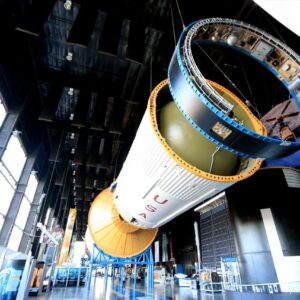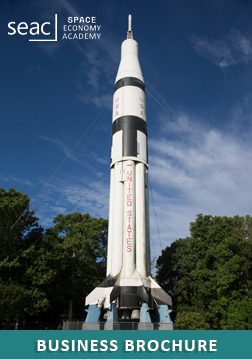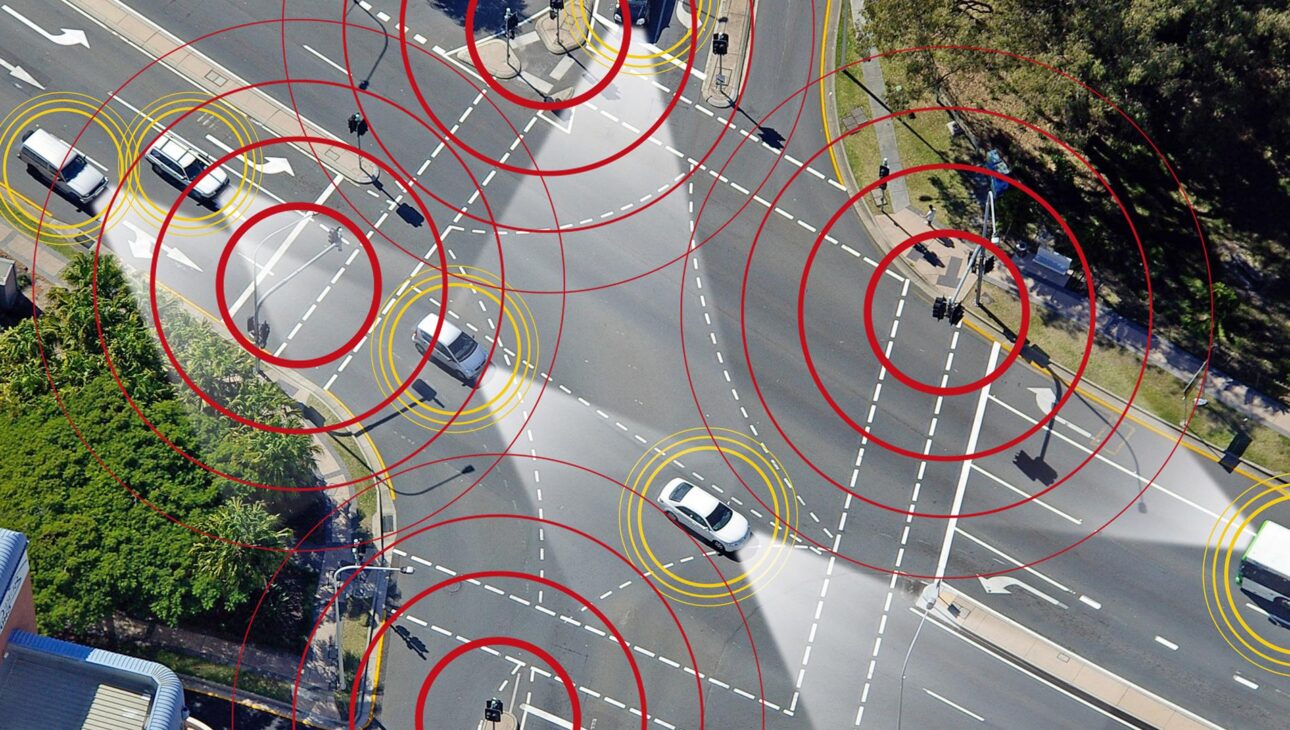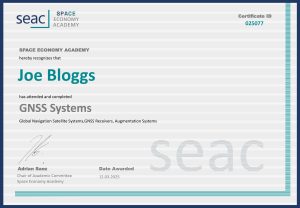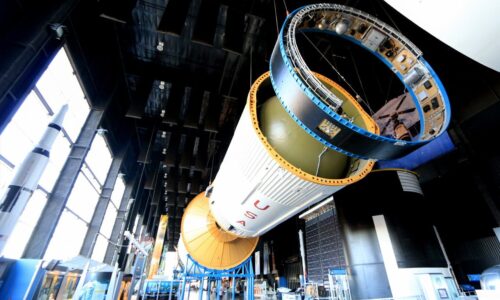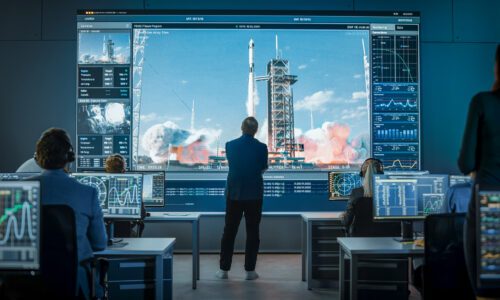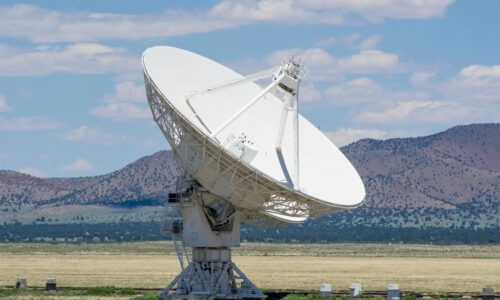GNSS Engineering (Professional Certificate)
Limited Places
Deadline: 17 November
Register now to access the course.
- Space
- 357 (Registered)
 Download the Brochure
Download the Brochure
The Next Space Frontier
Global Navigation Satellite Systems (GNSS) have revolutionized navigation and positioning, providing accurate location information worldwide. GNSS systems, such as GPS, GLONASS, Galileo, and BeiDou, rely on a constellation of satellites to broadcast signals enabling receivers to determine their precise position. Current trends in GNSS involve increased accuracy, reliability, and accessibility, with advancements like multi-constellation and multi-frequency receivers enhancing performance.
Evolution in GNSS technology includes the deployment of next-generation satellites with improved capabilities and the integration of augmentation systems for enhanced accuracy in challenging environments. Projections indicate continued expansion of GNSS applications across various sectors, including transportation, agriculture, telecommunications, and emergency services, with an estimated market value of over $320 billion by 2025. These advancements promise to further empower industries and individuals with reliable, high-precision positioning capabilities, driving innovation and economic growth.
Overview of the GNSS Course
SEAC professional online Space GNSS course is a program aiming at providing students with a comprehensive understanding of satellite navigation technology and its applications. Throughout the course, participants will focus on the principles of satellite navigation, including the functioning of satellite constellations, signal transmission, and receiver operation.
Global Positioning System (GPS) is analysed as the primary satellite navigation system. Additionally, they will explore other systems like Galileo, GLONASS and BeiDou. The students of GNSS System will focus on the different types of receivers, design considerations, and signal processing techniques to interpret satellite data accurately. This will be followed by the different augmentation systems (SBAS and GBAS) , as well as error sources when using the systems. Students will also make use of real case studies to interpret satellite data accurately.
SEAC – Certificate of Completion
Advance your career in GNSS Systems with SEAC—first-prize winner of the Galileo Masters University Challenge. Incubated at ESA BIC Hessen with leading industry partners, you’ll earn a Certificate of Completion in GNSS Systems.
The skills you will develop
Through this Satellite Navigation course, you will grasp principles, master GPS architecture, compare systems, optimize receivers, mitigate errors, and explore applications
- Understanding Fundamentals. Students will grasp the fundamental principles of satellite navigation, including the functioning of satellite constellations.
- Comprehensive Knowledge of GPS. Exploration of GPS, architecture, and the various segments – space, control, and user – will be provided.
- Comparative Study of Other Systems. Learners will gain insights into alternative satellite navigation systems like GLONASS and BeiDou
- Receiver Functionalities. Students will learn about receiver types, design considerations, and signal processing techniques to interpret satellite data accurately
- Error Sources and Augmentation. Understanding sources of errors and studying augmentation systems will be emphasized to enhance accuracy
- Applications and Challenges. Students will explore diverse applications of satellite navigation, including navigation, surveying, timing, and mapping.
Participant Profile
Participants of the GNSS course are:
- Engineers who want to understand the key technology drivers for GNSS Systems and all its technical components.
- Engineers who want to start or accelerate their career, in the GNSS sector.
- Managers involved in the development or operations of a GNSS System or component.
- Entrepreneurs wanting to start up or scale up their business exploiting GNSS Systems.
- Participants with an interest in GNSS systems and wanting to understand the key elements and innovation.
Career Center
SEAC offers career acceleration with lifetime access to premium packages, and unlocking private job notifications through our Careers platform. Foster development through lifelong learning, mentoring and networking.
- Certificate of completion: Share your success online and make your CV unique.
- Accelerate your career with SEAC- Careers: Unlock the private job offers , and get lifetime premium package.
- Live Sessions with instructors: Twice a year, meet the instructor, and get career advices.
- Lifelong Learning: Lifetime updates in the courses, and loyalty discount of up to 15% to all Alumni.
- Mentoring Opportunities at SEAC, access mentoring and network opportunities regularly.
→ Download the Brochure
Curriculum
- 5 Sections
- 37 Lessons
- Lifetime
- Section 1Global Navigation Satellite Systems3
- Section 2The radio-navigation concept6
- 2.12.1. The Navigation Problem
- 2.2Quiz : The Navigation Problem
- 2.32.2. Functional basis and Pseudorange Measurements
- 2.42.3. Pseudorange Errors
- 2.5Reading: Evaluation and mitigation of the influence of pseudorange biases on GNSS satellite clock offset estimation
- 2.6Quiz: Functional basis and Pseudorange Measurements and Errors
- Section 3GNSS, All Global Navigation Systems11
- 3.13.1. GNSS System Segments
- 3.2Quiz: GNSS Systems
- 3.33.2. Global Positioning System – GPS
- 3.4Quiz : GPS
- 3.53.3. European Global Navigation Satellite System – Galilleo
- 3.6Quiz : GALILEO
- 3.73.4. Other Satellite Navigation Systems (Glonass, Beidou..)
- 3.8Reading: Analysis on coverage ability of BeiDou navigation satellite system for manned spacecraft
- 3.93.5. GNSS Systems Comparison
- 3.10Reading: Battles in space: De-facto standardization of Global Navigation Satellite Systems
- 3.11Quiz : Other GNSS Systems
- Section 4Fundamentals of GNSS receivers11
- 4.14.1. Receiver Architecture
- 4.2Quiz : Receiver architecture
- 4.34.2. Acquisition
- 4.44.3. Tracking
- 4.5Reading: Monitoring the dynamic response of a pedestrian bridge by using low-cost GNSS receivers
- 4.6Quiz: Acquisition and Tracking
- 4.74.4. Navigation Unit
- 4.84.5. Interference, Multipath, and Scintillation
- 4.9Reading: Investigation of the impact of Ionospheric Scintillation on GNSS Performance over East Africa
- 4.10Quiz : Interference Multipath and Scintillation
- 4.114.6. Use cases and associated level of performance
- Section 5Introduction of the major Augmentation Systems6
Lecturer
Gerarda De Pasquale holds a Master Degree in Telecommunication Engineering from Polytechnic of Turin (Italy) with an educational background and a Master thesis strongly focus on GNSS systems. As of the moment, she is employed as GNSS Receiver and R&D Engineer at Rhea Group and she is working as consultant for EUSPA supporting the activities related to the European space programmes evolutions. Before joining the Rhea Group and EUSPA team, she was employed as Navigation System Engineer at "Intecs Solutions". From May 2018 to December 2021, she was a member of the System Engineering Team (SETA Team) supporting Galileo 1st Generation Unit (G1G) at ESA/ESTEC in the domain of GNSS receiver test and software development activities. She holds a certificate on Space Economy from the Seac Business School and on Space for Business from University of St. Gallen (HSG), NOVA School of Business and Economics Executive Education, Rotterdam School of Management and Erasmus University.

